Breakfast cereals have long been a staple in my pantry, but as I’ve grown more conscious about what I put into my body, the sugary, carb-heavy options of my youth just don’t cut it anymore. I’m always on the hunt for alternatives that satisfy my craving for a crunchy, flavorful start to the day without derailing my health goals.
This pursuit led me to two popular contenders in the healthier cereal space: Three Wishes and Magic Spoon. In this article, I’m going to share my firsthand experience with both, breaking down their features, taste, nutritional profiles, and overall value to help you decide which one might be the perfect fit for your breakfast bowl.
A Brief Comparison Table
| Feature | Three Wishes | Magic Spoon |
| Primary Goal | High protein, low sugar, grain-free | High protein, keto-friendly, grain-free |
| Main Ingredients | Chickpea, Tapioca, Pea Protein | Milk Protein Isolate, Tapioca Starch |
| Sweeteners | Monk Fruit, Organic Cane Sugar (minimal) | Allulose, Monk Fruit, Stevia |
| Texture | Crunchy, slightly dense, more “natural” feel | Very crunchy, airy, classic “kid cereal” crunch |
| Flavor Profile | Subtler, more natural, less intense sweetness | Bold, intensely sweet, nostalgic flavor |
| Protein per Serving | 8g (per ~3/4 cup) | 13-14g (per ~1 cup) |
| Net Carbs | 15g-16g (total carbs) | 4-5g (Net Carbs) |
| Sugar per Serving | 3g (minimal added sugar) | 0g (no added sugar) |
| Fiber per Serving | 3g | 1g |
| Price Point (approx.) | Mid-range to premium | Premium, generally higher per serving |
| Key Appeal | Clean ingredients, good protein, less processed | Keto-friendly, nostalgic taste, higher protein |
| Common Flavors | Unsweetened, Honey, Cinnamon, Cocoa, Fruity | Frosted, Fruity, Peanut Butter, Cocoa, Cinnamon, Blueberry, Maple Waffle |
| Satiety | Good, keeps me full for a few hours | Excellent, very filling |
| Digestibility | Generally good, might cause slight gas for some sensitive to chickpeas | Generally good, allulose can cause discomfort for some in large amounts |
| Milk Interaction | Holds crunch well, milk doesn’t get overly sweet | Holds crunch exceptionally well, milk stays clean |
| Availability | Wider retail distribution (Target, Whole Foods) | Primarily online (direct-to-consumer) |
My Experience With Three Wishes Cereal Vs. Magic Spoon Cereal
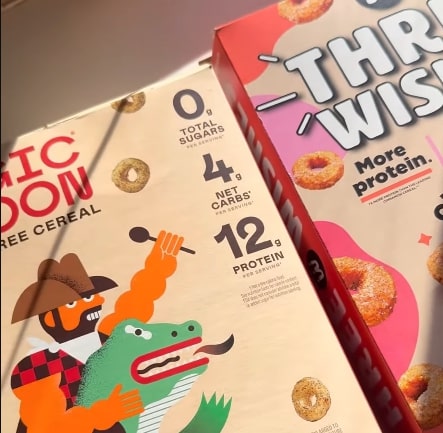
For years, my morning routine involved a quick bowl of whatever cereal was on sale, usually something brightly colored and loaded with sugar.
It was convenient, but by mid-morning, I’d inevitably crash, feeling sluggish and reaching for another snack.
As I started paying closer attention to macronutrients – protein, healthy fats, and complex carbohydrates – I realized that my breakfast cereal habit was undermining my energy levels and overall well-being.
I wasn’t looking for a magic bullet, but a sustainable way to enjoy breakfast that aligned with my desire for sustained energy and better nutrition.
That’s when I stumbled upon the new wave of “healthy” cereals – options that boasted high protein, low sugar, and often grain-free ingredients.
Among the buzz, two names kept popping up:Three Wishes and Magic Spoon. Both promised to reinvent the breakfast experience, but they approached it from slightly different angles. I decided to embark on a taste test and nutritional analysis of my own, integrating them into my daily routine to see which truly delivered.
Three Wishes Cereal: The Clean Ingredient Contender
Three Wishes immediately caught my eye with its minimalist packaging and emphasis on “protein, not grains.” As someone trying to reduce my grain intake without going full-keto, this sounded like a promising middle ground.
Their core ingredient is chickpeas, which intrigued me as a base for cereal. I picked up a few flavors, eager to see if it could live up to the hype.
Pros of Three Wishes
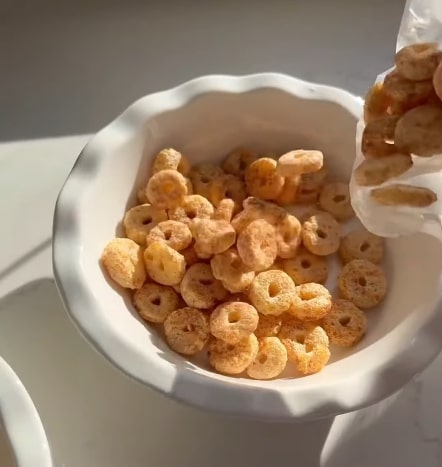
- Clean and Minimal Ingredients: This is a huge win for me. Three Wishes prides itself on using very few, easily recognizable ingredients. The base is chickpeas, tapioca, and pea protein, sweetened lightly with monk fruit and a touch of organic cane sugar. This transparency made me feel confident about what I was eating. It’s refreshing to see a cereal without a long list of unpronounceable additives.
- Good Source of Plant-Based Protein: With 8 grams of protein per serving (around 3/4 cup), Three Wishes offers a solid protein boost for a cereal. This helps keep me feeling full and satisfied until my next meal, preventing that mid-morning energy slump. For someone looking to increase their plant-based protein intake, this is an excellent option.
- Low in Added Sugar: Most conventional cereals are sugar bombs. Three Wishes keeps it impressively low, with only 3 grams of added sugar per serving. This means I’m not starting my day with a sugar rush followed by an inevitable crash. The sweetness is subtle and natural, allowing the other flavors to come through without being overpowered.
- Pleasant, Subtler Flavor Profile: The flavors, like Honey, Cinnamon, and Cocoa, are present but not overwhelmingly sweet or artificial. The Honey flavor, for instance, has a gentle sweetness that isn’t cloying. This makes it a great canvas if you like to add fruit or other toppings, as the cereal doesn’t dominate the taste experience. It felt more sophisticated than typical kid cereals.
- Satisfyingly Crunchy Texture: Despite being made from chickpeas, Three Wishes maintains a satisfying crunch that holds up well in milk. It doesn’t get soggy immediately, which is crucial for my enjoyment. The crunch is a bit denser than airy, puffed cereals, giving it a more substantial feel in the mouth.
- Accessible in Mainstream Stores: I appreciated that I could find Three Wishes at my local Target and Whole Foods. This makes it much easier to purchase regularly without having to rely solely on online orders, which can sometimes come with shipping costs or longer wait times.
- Good for Grain-Free Diets (Not Strictly Keto): While it’s not strictly keto due to the net carb count, it’s an excellent grain-free option for those looking to reduce grains in their diet without going full low-carb. It offered a nice alternative to oats or corn-based cereals.
- Good Satiety: The combination of protein and fiber (3g per serving) genuinely kept me full for a good three to four hours, which is much longer than any traditional cereal I’ve eaten. This meant no desperate rummaging for snacks before lunch.
Read more: My Thoughts On Raw Generation Juice Cleanse
Cons of Three Wishes
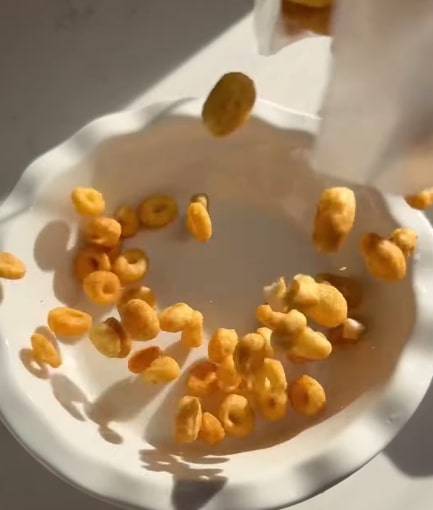
- Higher Net Carbs for Strict Keto: While grain-free, its carbohydrate content (around 15-16g total carbs) means it’s not suitable for those strictly adhering to a ketogenic diet. If you’re counting net carbs very carefully, this might be too high for a single serving.
- Subtler Flavor Might Not Appeal to All: For those accustomed to intensely sweet, boldly flavored conventional cereals, Three Wishes’ more natural and subtle taste might initially feel a bit underwhelming. It requires an adjustment of expectations.
- Slightly Unique Aftertaste: Due to the chickpea base, some flavors (especially the plainer ones) occasionally had a very slight, almost earthy aftertaste. It wasn’t unpleasant, but it was noticeable sometimes, particularly when eaten plain without milk.
- Can Be Pricier Than Conventional Cereals: While more affordable than Magic Spoon, Three Wishes is still significantly more expensive than a box of generic or even popular conventional cereals. You’re paying for the quality ingredients and specialized formulation.
- Texture Might Be Too Dense for Some: The crunch is great, but it’s a denser, more substantial crunch compared to airy, puffed cereals. Some might prefer a lighter, less “chewy” texture.
- Potential for Digestive Adjustment: For some individuals sensitive to legumes, the chickpea base might cause minor digestive discomfort or gas initially, though I personally didn’t experience this consistently.
Magic Spoon Cereal: The Keto-Friendly Nostalgia Trip
Magic Spoon positioned itself as the “childhood cereal, reinvented,” promising all the flavor and fun of classic sugary cereals but with a keto-friendly, high-protein twist.
This was a bold claim, and my curiosity was piqued. Their ingredient list features milk protein isolate and allulose as key components.
Pros of Magic Spoon
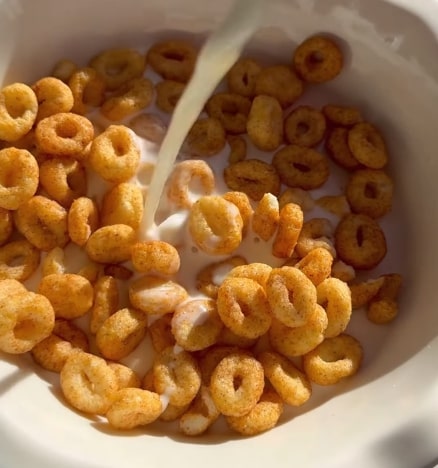
- Exceptional Keto-Friendliness: This is where Magic Spoon truly shines. With only 4-5 grams of net carbs and 0 grams of sugar per serving, it’s a dream come true for those following a ketogenic or very low-carb lifestyle. It allows you to enjoy cereal without kicking yourself out of ketosis, which is a massive relief for many.
- Very High Protein Content: Packing an impressive 13-14 grams of protein per serving (around 1 cup), Magic Spoon is incredibly satiating. I found it kept me feeling full and energized for hours, easily lasting me until lunchtime without any hunger pangs. This protein punch is a huge advantage for muscle maintenance and appetite control.
- Bold, Nostalgic Flavors: Magic Spoon absolutely delivers on its promise of bringing back childhood cereal flavors. Flavors like Frosted, Fruity, Peanut Butter, and Cocoa are remarkably accurate and intensely flavored. They hit those nostalgic notes perfectly, making it a genuinely fun and delicious breakfast experience that scratches that classic cereal itch. The sweetness, derived from allulose and monk fruit, is pronounced but generally well-balanced.
- Incredibly Crunchy and Airy Texture: The texture is spot-on for what you’d expect from a classic kid cereal – light, airy, and incredibly crunchy. It holds its crunch exceptionally well in milk, even after sitting for a while, which is a testament to its formulation. This satisfying texture significantly contributes to the overall enjoyment.
- No Added Sugar: The 0 grams of sugar is a huge win for health-conscious individuals. It means you get all the sweetness and flavor without the negative health impacts of added sugars, such as blood sugar spikes and crashes.
- Good for Post-Workout: Given its high protein content and low sugar, Magic Spoon makes for an excellent post-workout breakfast. It helps replenish protein stores without adding excessive carbohydrates.
- Wide Range of Creative Flavors: Beyond the classics, Magic Spoon often introduces seasonal and unique flavors (like Maple Waffle or Blueberry Muffin), keeping the options exciting and preventing flavor fatigue.
Also read: Comparison Of Happy And Good Girl Probiotics
Cons of Magic Spoon
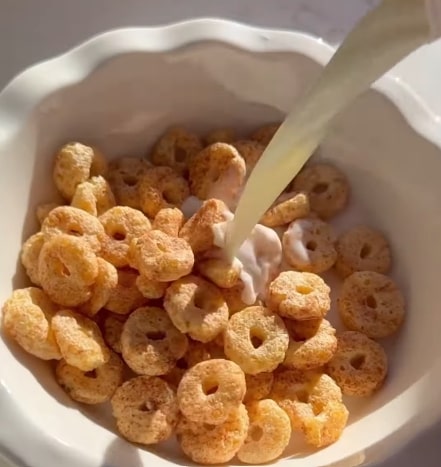
- Premium Price Tag: Magic Spoon is undoubtedly on the higher end of the price spectrum for cereal. It’s a premium product with a premium cost. While I found the quality and nutritional benefits justified the price for my personal goals, it might be a significant barrier for some budgets.
- Allulose Can Cause Digestive Issues for Some: Allulose, the primary sweetener, is generally well-tolerated, but for some individuals, consuming large quantities (or if you’re particularly sensitive) can lead to mild digestive discomfort, such as bloating or gas. I personally didn’t experience this, but it’s a common feedback point.
- Flavor Intensity Might Be Too Much for Some: While I appreciate the bold flavors, some might find them too intense or too sweet, especially if they are accustomed to very natural or unsweetened foods. It truly mimics sugary cereals, so if you’ve completely moved away from that profile, it might be a shock.
- Primarily Online Sales: Magic Spoon is predominantly sold directly through their website. While they offer subscriptions and good shipping, it means you can’t just grab a box on a whim at your local grocery store. This limits immediate accessibility for some.
- Artificial Flavor Perception (for some): Despite trying to replicate classic tastes, some individuals might still perceive a slight artificiality in certain flavors compared to entirely natural ingredients. This is highly subjective, but it’s a possibility.
- Lower Fiber Content: Compared to Three Wishes, Magic Spoon generally has less fiber per serving (around 1g). While it’s great for protein and low carbs, those looking to boost their fiber intake might need to supplement with other foods.
The Head-to-Head: My Takeaway
After weeks of rotating between Three Wishes and Magic Spoon, I’ve come to appreciate both for different reasons, and my preference often depends on my specific goals for the day.
If my primary goal is clean ingredients, a more natural and subtle taste, and good plant-based protein without being strictly keto, Three Wishes is my go-to. It feels like a healthier, less processed option that still delivers on crunch and satiety. It’s perfect for those mornings when I want something wholesome and comforting.
However, if I’m specifically aiming for very low net carbs, maximum protein, and a nostalgic, intensely flavorful experience, Magic Spoonwins out. It truly mimics the sugary cereals of my childhood but without any of the guilt. It’s a fantastic indulgence for those on a keto diet or anyone who misses those classic cereal tastes. The crunch is unparalleled.
For me, living in a household with varying dietary preferences, having both on hand can be beneficial. My kids, surprisingly, enjoyed both, though they gravitated more towards the bolder flavors of Magic Spoon (which wasn’t entirely surprising!). As for me, I often reach for Three Wishes on weekdays when I’m focusing on whole foods, and Magic Spoon becomes my weekend treat or a convenient keto-friendly option when I need a quick, high-protein breakfast.
Ultimately, both brands represent a significant step forward in the breakfast cereal landscape, offering healthier alternatives to the sugar-laden options that have dominated shelves for decades. They demonstrate that you don’t have to sacrifice taste or texture to make a better nutritional choice. It boils down to your specific dietary needs, taste preferences, and how much you’re willing to invest in your morning bowl.
Frequently Asked Questions (FAQ)
Yes, Three Wishes cereal is generally considered a healthy option, especially compared to traditional cereals. It’s made from clean, minimal ingredients like chickpeas and pea protein, offering a good amount of protein (8g per serving) and being low in added sugar (3g per serving). It’s also grain-free.
Magic Spoon cereal is healthy for specific dietary goals, particularly those following a ketogenic (keto) or very low-carb diet. It’s very high in protein (13-14g per serving) and has 0g of sugar and only 4-5g net carbs per serving. It’s a great choice for sustained energy and satiety without blood sugar spikes.
Cereals similar to Three Wishes often focus on being high in protein, low in sugar, and possibly grain-free. Examples might include Catalina Crunch (though often more keto-focused like Magic Spoon) or some smaller, emerging brands that use legume or pea protein bases for a cleaner ingredient profile.
Yes, Three Wishes is generally considered a good brand, especially if you prioritize clean ingredients, moderate protein, and low sugar in your cereal. They are transparent about their sourcing and commitment to healthier breakfast options, earning positive feedback from consumers looking for alternatives to traditional cereals.
Conclusion
The world of breakfast cereal has definitely evolved, moving beyond just sugar and refined grains. My journey with Three Wishes and Magic Spoon has been an enlightening one, proving that you can indeed have a breakfast that’s both delicious and nutritious.
Whether you lean towards the clean, subtly sweet profile of Three Wishes or the bold, nostalgic, keto-friendly crunch of Magic Spoon, both brands offer compelling reasons to rethink your morning meal. Your ideal choice will hinge on your specific dietary needs – perhaps you’re strictly keto, or maybe you just want fewer grains and less sugar.
Regardless, investing in a breakfast that keeps you full, focused, and feeling good is always a worthwhile endeavor. So go ahead, experiment, and find the perfect bowl to kickstart your day, knowing you’re making a choice that supports your well-being.
